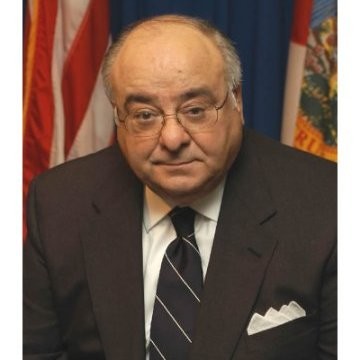
Title: Crime Scene Investigation and Management
Plenary Speaker
Prof. Anthony Schembri
Former Police Commissioner in New York, United States
Abstract
This will be a presentation of real crime scenes and the management of efforts bringing together the forensic experts and the investigative personal to solve real cases. Having lead the Homicide Department department unlike CSI and other programs, police fail to collect and properly analysis a crime scene which I will demonstrate. We need to interpret crime scenes. Sloppy police investigations, lazy forensic personnel team up to reduce the ability to solve cases with solid evidence.
Biography
Anthony Schembri is a respected law enforcement and academic professional with over four decades’ experience in the field. Over the years, he has drawn praise from such varied sources as New York City Mayor, President Jimmy Carter, Florida Governor Jeb Bush, and New York Governor Mario Cuomo. First appointed to the Brooklyn District Attorneys Office he advanced to Deputy Chief of the Narcotics Bureau, then to Director of Training at the District Attorneys Police Academy. Anthony Schembri has served as the city’s Deputy Inspector General, investigating cases of major crime and corruption. He was appointed by the Mayor of New York as Corrections Commissioner, a position putting him in charge of 12,000 uniformed officers and 20,000 inmates at 19 separate jail facilities. Today, the Citrus County, Florida, resident serves as a Visiting Professor at Oxford and Sheffield Hallam University and named Outstanding Professor of the Year at the University of Florida.

Title: GREEN CRIMINOLOGY: THE ROLE OF THE CRIMINOLOGIST IN ENVIRONMENTAL CRIMES
Invited Speaker
Ms. Marta Calderón García
The International University of La Rioja, Spain
Abstract
Environmental crimes are nowadays one of the most lucrative activities in the criminal world, however, lax legislation and a lack of social awareness have led to a poor treatment of this type of crime. In response to this situation, Green Criminology, which not only studies crimes against the environment, but also the damage it suffers, aims to broaden the classical view of criminality, and promote the protection of the victims of this type of crimes, who are not always recognized as such. Thus, throughout this presentation it is intended to abandon the eminently theoretical notion of this field, demonstrating that the criminologist has a role in the fight against this type of crime and that there are multiple real jobs in which a criminologist not only can, but should, develop his professional career.
Environmental criminology, job position, environmental victimology, Green Criminology.
Biography
Marta Calderón García recently graduated in Criminology from the European University Miguel de Cervantes (Spain) and was named first of her class. She has always shown great interest in how criminologists can be part of the field of environmental crime prevention and is currently part of a United Nations research group whose research focuses on environmental crime in Latin America. She is also pursuing a degree in Psychology.

Title: The application of rapid non-destructive methods (ATR FTIR) for the identification of bodily fluids
Plenary Speaker
Prof. Anna Barbaro
Worldwide Association of Women Forensic Experts, Italy
Abstract
The ability to establish the origin of a biological sample (as human or animal) found at the crime scene, its nature, and the time since its deposition is crucial within criminal investigations in order to correctly identify the evidence to be used at the court as a probe.
In this perspective, the application of rapid non-destructive methods, like infrared (IR) spectroscopy, for the identification of bodily fluids can greatly assist the investigators by allowing a rapid identification without consuming or destroying the sample, reducing laboratory costs and efforts.
Biography
Anna Barbaro has completed her European PhD in Forensic Genetics (PhD) at University of Santiago de Compostela (Spain). She got a Diploma at the School of Specialization in Applied Genetics and a Master Diploma in Psychological and Behavioral Techniques of the Criminal Investigation at the University of Rome La Sapienza (Italy). She has published more than 150 papers, including conference presentation, she is Author of 3 technical Manuals and of some chapters in other books. She serves as President of the Worldwide Association of Women Forensic Experts, she is honor member of some scientific associations, she serves as reviewer for several international scientific journals and she is Member of the Editorial Committee of some international scientific journals. Invited speaker at various national and international conferences, organizer of courses and conferences about Forensic Sciences, member of the Scientific Committee of several courses and conferences. She is currently researcher at the University of Alcalà (Spain).
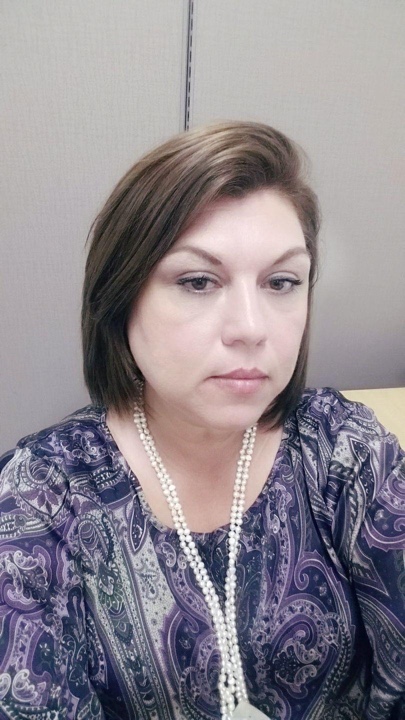
Title: Handwriting analysis and Body Language tools in schools to help address skills, and abilities and try to overturn Juvenile delinquency.
Invited Speaker
Mrs. Zaida Melissa Guajardo
United States
Abstract
Graphology or handwriting analysis is a tool that helps us to see the talents and skills of people; as well as their frustrations, moods, temperament, and character, like body language. In my opinion, Graphology is even more extensive. In this way, with staff prepared with knowledge in graphology, we can help children to bring out all their talents and, so they will be happier and more accomplished children.
Another of the achievements is being able to channel children and young people with aggressive temperaments that could end up in a bad outcome trying to avoid any type of misfortune, whether it attempts to hurt themselves or others.
In the area of college transitions, this helps the student make better decisions about the career that they want to pursue according to their personal skills and their personality, this allows them to decide which one best suits, whether to work in a group or alone, as well as other very important details.
Biography
Zaida M. Guajardo Bachelor in Criminal Justice Investigations, National University College, Puerto Rico, Magna Cum Laude Master in Criminal Profiling and Emotional Intelligence, International school of Criminology and Criminalistics, Spain, Forensic handwriting analyst, and Grafoscopy, Colegio Mexicano de Grafología, I have worked the last 5 years in Premier High School in different positions with the students in different positions, as well as in hospitals in the area of pediatrics for 10 years

Title: Global Human Trafficking and Migrant Smuggling: Similarities and Differences
Keynote Speaker
Dr. Marian Swindell
Mississippi State University, United States
Abstract
Human trafficking and migrant smuggling are two of the most lucrative and fastest-growing businesses around the world –generating global profits of around $44.3 billion each year. A variety of reasons account for this growth. The “Push and Pull” framework explains that poverty, unemployment, lack of educational opportunities, family drug use and violence, natural disasters, and terroristic governmental systems “push” people into human trafficking. Employers, wanting cheap labor, pull these victims into these situations. Migrant smuggling however is both similar and different in many perspectives. This presentation provides an overview of global human trafficking and migrant smuggling definitions, statistics, and at-risk indicators, and discusses the four main differences.
Biography
Dr. Marian Swindell is the first teaching professor, holding both a PhD and MSW in Social Work, to be awarded tenure and achieve the rank of full professor at Mississippi State University. With over 30 years in forensic social work, Dr. Swindell brings a wealth of information from sociology, social work, and forensic testimony evidence retrieval to this conference. Dr. Swindell completed her Ph.D. (2001) and MSW (1992) in Social Work from the University of Alabama and completed her Bachelors of Arts (1989), majoring in Political Science and minoring in Latin from the University of North Carolina-Greensboro. She is also a Captain in the Mississippi State Guard and is the first social work academic to present at this conference.

Title: Transforming Corruption on the Local Level Part II: Tools forNavigating Narcissistic Warfare
Keynote Speaker
Dr. Janet Mielke Schwartz
Ph.D., FAPA, FAAFS, CHPP, President & Forensic Behavioral Scientist, Forensic Fraud Research, Inc., United States
Abstract
Part II of Transforming Corruption on the Local Level will delve into the spectrum of narcissistic warfarespreading within our global society and acutely so when working to thwart corruption, expose sexual abuse, a financial crime, or a family or community secret. Today, wewitness an intense dark energy whose focus is to deceive humanity, to be divisive, to wreak havocandcreate chaos in personal relationships, the workplace, churches, organizations, universities and in the process of democratic governments and more. The struggle to discern and to understand the change is real. Developing an awareness of the types of narcissists and understanding their lack of ability to bond and to care about others is a critical beginning. From there numerous questions arise: What is narcissistic warfare? How is it experienced? Who are the narcissists? Understanding the enemy necessitates education.Who are the people that choose to become their followers?New research indicates those who imagined how false statements could eventually become true, especially when the false statement fits their political views felt lying was acceptable. While they knew statements were false, by imagining how they might become true made it excusable to lie. Committing to a path of upholding truth, mastering rejection, establishing boundaries, boldly commandingrespect, finding comfort in the struggle to resist, forming alliances, and learning to live in a perpetual state of healing will fuel goodwill resulting in courageous personal growth. With a humble spirit of commitment, let us lift the veil together. It can be done.
Biography
Dr. Janet Schwartz (Ph.D. ’87, University of Pittsburgh) received the University Scholaraward presented to “one of those who show high promise of significant contribution to society and progress.” Her presentation, “Psychology of White-Collar Criminals” is featured on USDOJ’s Justice Television Network. She has provided information to the FBI’s HIDTA Money-Laundering Division (Manhattan), the FBI in Washington, D.C., the Defense Intelligence Agency, the CIA, the NSF, the Criminal Investigation Division of the IRS, the USDOHHS, the U.S. Postal Inspection Service, the Ohio Organized Crime Investigations Commission, the Ohio AG’s Office, Ohio’s Governor’s Office, 19 state departments and U.S. Attorney’s Offices.

Title: Know Your Worth- Mental Well-being Matters
Invited Speaker
Ms. Krish Patel
Torrance Police Department, United States
Abstract
Forensic Scientists play a vital role within the Criminal Justice system; more often than not, one would say the essential part of the jigsaw puzzle. Our world is exciting, using science in cracking crime and assisting with putting heinous humans of our earth, behind bars. However, this role that we play does come with a price. Exposure to victim trauma has a silent rebounding effect. This comes in the form of what is known as Vicarious Trauma (VT), Secondary Traumatic Stress (STS) and Compassion Fatigue (CF). This short presentation will give you a simplified understanding of VT, STS, CF and the preventative measures that one can take to recognize and re-set your mindset for your mental well-being.
Biography
Krish Patel is currently the Forensic Supervisor of the Crime Laboratory at Torrance Police Department, Los Angeles, California (USA). She hasbeen an active practitioner in the areas of Fingerprint Analysis and Crime Scene Investigations for the past 25 years. And is board member of the Los Angeles Forensic Supervisor Group and training committee. Other affiliations include being along-standing active member of the California State Division International Association for Identification, The International Association for Identification and The Forensic Science Society. She holds a Bachelor of Science degree (with honors) in Applied Biology- with a concentration in Molecular Cell Biology and Genetics.
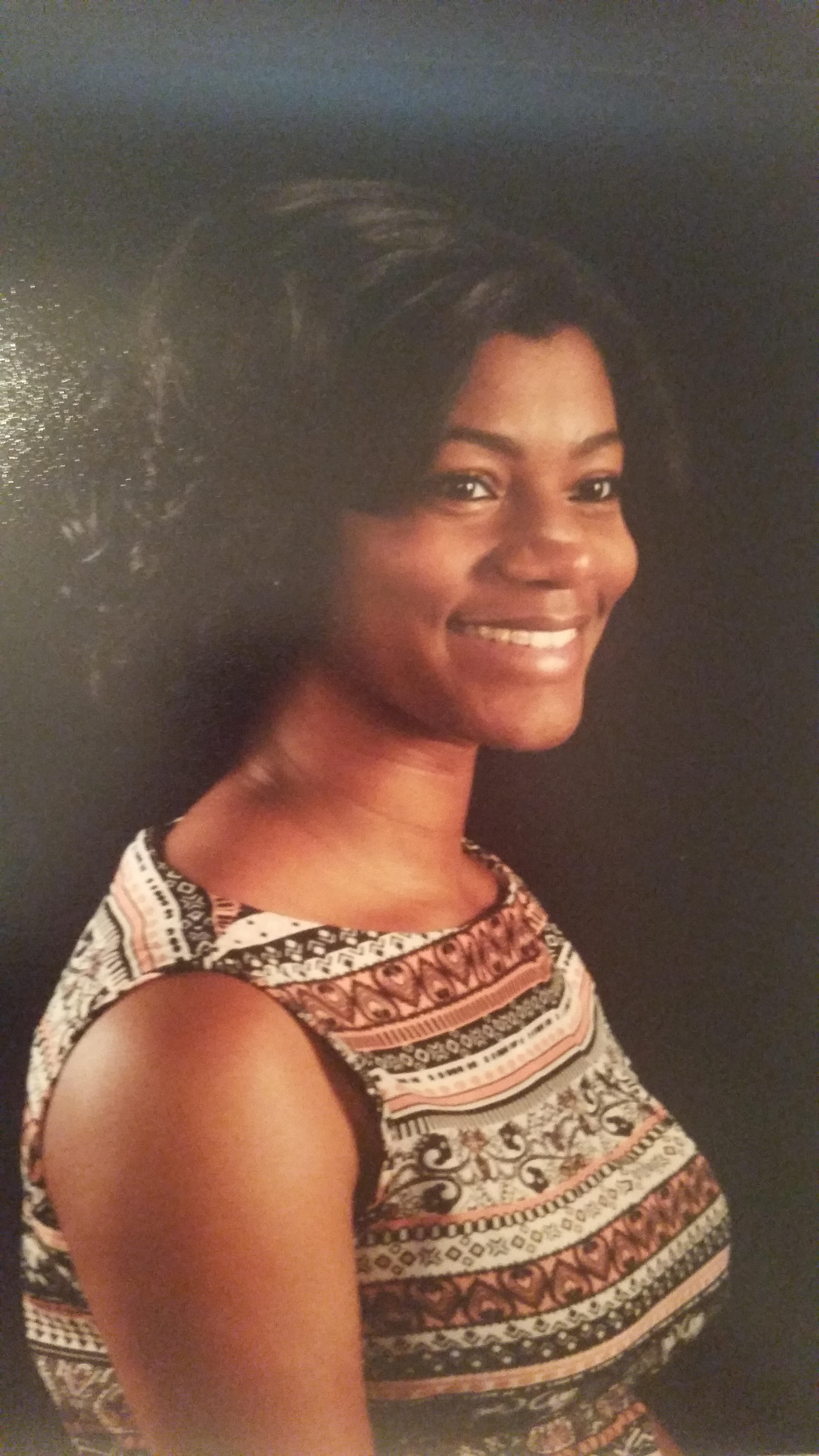
Title: Deaths Due to Electrocution: An Evaluation of Death Scene Investigations and Autopsy Findings
Invited Speaker
Mrs. Brittani K Smith
Oklahoma State University, United States
Abstract
The purpose of the study was to delineate the epidemiological characteristics of electrocution deaths in Maryland, identify any potential risks, and address preventive measures. A retrospective review of all the deaths due to electrocution was conducted at the Office of the Chief Medical Examiner in the State of Maryland from 2005 to 2015. During the 11-year period, a total of 55 electrocution deaths were identified from the autopsy cases at the statewide medical examiner system. More males died of electrocution than females with its ratio of (M: F) = 9:1. Of the 55 cases, 67.3% were White, 18.2% were African-American, 12.7% were Hispanic, and 1.8% were other races. The age of the victims ranged from 4 to 83 years with mean age of 40 years. >96% deaths due to accidents and 3.4% were suicide. The majority of deaths (70.9%) were caused by high-voltage circuits. Approximately 64% of fatalities were work-related accidents. The study indicated that electrocution deaths frequently affected young male workers who were in contact with a high-voltage currents while on the job. The detailed death scene investigation and autopsy findings are presented. The potential hazards of electricity must continue to be addressed in public safety campaigns to prevent such deaths. Strategies should ensure safe work environments for any contact with electric currents.
Biography
Brittani (Massey) Smith has completed her Bachelor of Science degree in Biology from Claflin University in 2016. She has also completed her Master of Science degree in Forensic Medicine from the University of Maryland, Baltimore in 2017. She is currently pursuing her Doctor of Philosophy degree in Forensic Science from the Oklahoma State University. Mrs. Smith has previously worked as an instructor of Anatomy and Physiology for two colleges and prior has experience performing forensic autopsies at the Office of the Chief Medical Examiner in Baltimore, Maryland. Her research on electrocution has been presented at the International Conference of Evidence Law and Forensic Science (ICELFS) and has been published in the Journal of Forensic Science and Medicine. She is also a member of the International Association for Identification.
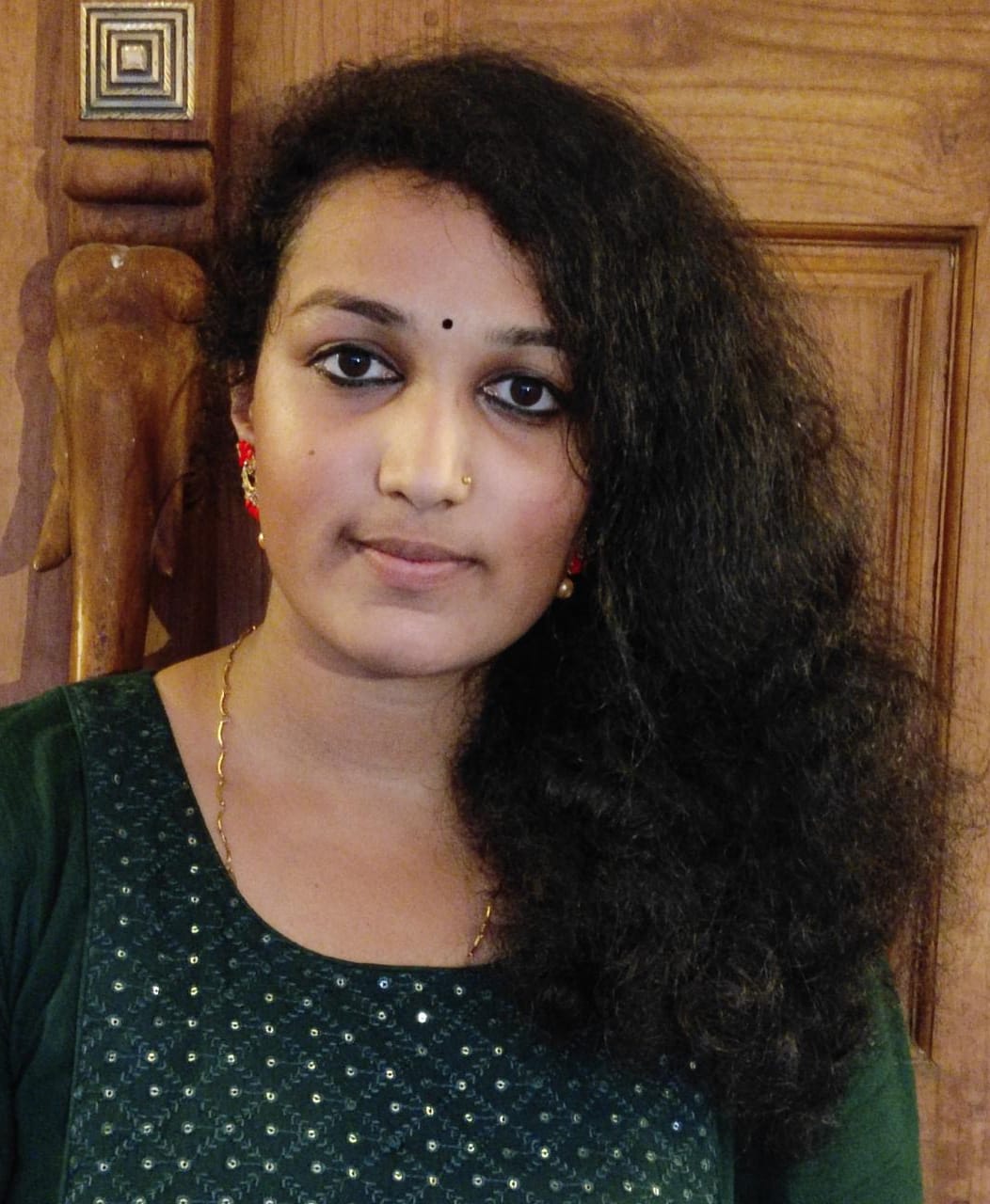
Title: Tools used in Forensic Psychology
Invited Speaker
Ms. Nayana Anoop Kumar
Annai Fathima College of Arts and Science, India
Abstract
We have seen drastic rise in crime rate in the past centuries.At this rate In the coming days, more than solving the crime , prevention of crime will become more challenging as well as beneficial. For this puprpose various tools of Forensic Psychology can be inducted in practice. Tools like Narco Analysis, Polygraphy , BEOS has been in use from a long time but its full potential is yet to be explored. Forensic Psychology is a branch of Forensic that aids in understanding why a crime happened, what made a normal person turn into a criminal, or even why did a victim take the drastic step of comitting a suicide.This subject is basically getting inside the brains of a person and analysing the reason for the behaviours. Psychology has always been a beneficial tool in maintaining the balance in a common persons life and in turn balance of the society. Now even Forensic psychology is working towards the same. Understanding the reasons of crime, crime pattern will help us to formulate ways to ways to prevent this crime. The various tools mentioned alongwith Artificial Intellingence can be used to predict crime and criminal behaviours and inturn prevent it. Last few years have seen increased interest of Forensic researchers towards exploring the tools of Psychology.
Biography

Title: Drugs Usages and their effects on Mental and Physical Health of Adolescent Population: Deteriorating Social Norms: A Forensic Perspective
Keynote Speaker
Dr. Rakhi Khanna
Regional Forensic Science Lab, Kota, Rajasthan, India
Abstract
A big percentage of the adolescent population is under the grab of high stress, usage of recreational drugs and deteriorating moral values is a matter of concern before affecting their Mental and Physical health at a drastic impossible alarming stage of cure. Every responsible society and their educationists need to get aware and alert to save them and provide them environment full of values and ensuring them of a safe life for their future. At age of adolescence there are various hormonal changes leads to sexual desires. Social sites available on internet boost the need in a wrong way. At this stage every parents and educationist needs to get them aware of their desires in a natural way but to tell them of having strong mental and physical bar before attaining the age of 18 years. In forensic laboratory large number of cases of criminal acts is reporting every day. A steep rise in crime committed by and to adolescence requires to aware them about uses and after effects of recreational drugs and crime associated to them. The effects of the drug may vary considerably according to the method of intake (orally, nasally, inhalation/smoking or by intravenous, intramuscular, or subcutaneous injection), and they may be intensified by coincidental alcohol use.Certain common features emerge which may be related directly and specifically to the drug but other clinical features may arise in a non-specific way from complications of injection and/or coma. In Indian scenario the requirement of adolescent aged population is not discussed and it leads to complications in later age of adulthood. Ignorance of laws and effects of various factors on their life style leads to criminal acts.
In Nirbhaya case a 23-year-old paramedic student was raped on 16-17 December, 2012 inside a running bus in South Delhi by six persons and severely assaulted before being thrown out on the road. She died on December 29, 2012 at Mount Elizabeth Hospital in Singapore.
The juvenile, was convicted of rape and murder but was given three years imprisonment for the heinous crime. The Ministry of Women and Child Development began contemplating several desired amendments in 2011 and a process of consultation with various stake holders was initiated. One of the accused in the 2012 Delhi gang rape was a few months younger than 18 years of age. He was tried in a juvenile court. One of the convicts was found to be juvenile and sentenced to 3 years in a reform home. Eight writ petitions alleging the Act and its several provisions to be unconstitutional were heard by the Supreme Court of India in the second week of July 2013 and were dismissed, holding the Act to be constitutional. Demands for a reduction of the age of juveniles from 18 to 16 years were also turned down by the Supreme Court, when the Union of India stated that there is no proposal to reduce the age of a juvenile. In July 2014, Minister of Women and Child Development said that 50% of juvenile crimes were committed by teens who thought that they get away with it. She added that changing the law, will allow them to be tried for murder and rape as adults, would scare them. The bill was introduced in the Parliament on 12 August 2014.On 22 April 2015; the Cabinet cleared the final version after some changes.
A revamped Juvenile Justice Bill was passed in the Lok Sabha on 7 May 2015. The new bill will allow minors in the age group of 16-18 to be tried as adults if they commit heinous crimes. The crime will be examined by the Juvenile Justice Board to ascertain if the crime was committed as a 'child' or an 'adult'.
In this context Forensic Science plays important role in uncovering many crimes associated with Rape and use of drugs. Use of drugs as Sedatives, Anaesthetic as Ketamine, Stimulants, Hallucinogens, Organic solvents by young person’s their effects on mental and physical health and life style will be explained by elaborating detection methodologies in samples by forensic laboratory. Awareness of Laws related to various offences and Drug Addiction is therefore highly recommended for management of problems of adolescence generation.
Key words: Juvenile, Addiction, Forensics, Crime
Biography
Dr. Rakhi Khanna is presently the Deputy Director Training at State Forensic Science Laboratory, Jaipur, Rajasthan, India. As Head of Toxicology section, Analyzed more than 10 thousand cases. Manage Analysis and Reporting of Poisoning cases, Produce Reports in time, Give evidence in court, Adoption of new innovative techniques of analysis according to specific cases. Performed Research work in many cases. President of Internal Complaint committee of Prevention, Prohibition and Redressal Act against sexual harassment of women at workplace, 2013. Has wide experience of analytical and administrative work as DDO, Building construction of new building, Development of new Laboratory and Toxicology Division at Ajmer, Attend conferences, sending papers in conferences, taking invited lectures. Working experience of 22 years as Forensic Scientist cum Toxicologist from 1998 and have experience of analyses of large number of cases. approx. 20,000 cases and 60000 exhibits are reported.

Title: Using online data analysis tools to create research queries
Keynote Speaker
Dr. Aviva Twersky Glasner
United States
Abstract
Online analysis of existing data is an excellent method of creating and testing hypotheses on criminal justice matters. This presentation will present ways of accessing data, online, as well as introduce a means of conducting research on the various characteristics of, including but not limited to, characteristics of prison inmates; incarceration rates as well as characteristics of both the probation system and probationers.
Biography
Dr. Aviva Twersky Glasner, Ph.D. received a Master's in Forensic Psychology and her doctor's degree in Criminal Justice. She has worked with Deaf individuals and developed her research interests around using criminological theories to examine the role that socialization may play in the criminality of Deaf inmates.
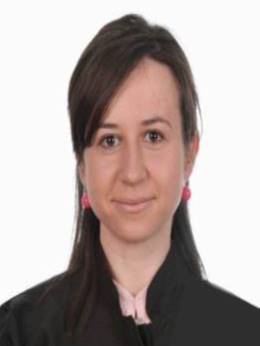
Title: UTILITY OF MASS SPECTROMETRY IMAGING IN FORENSIC CASES: A LITERATURE REVIEW
Keynote Speakers
Dr. Bianca Hanganu, Dr. Irina Smaranda Manoilescu and Prof. Beatrice Gabriela Ioan
Grigore T. Popa University of Medicine and Pharmacy, Iasi, Romania
Abstract
Introduction. Mass spectrometry is used for the analysis of various samples by measuring molecular weight of numerous molecules such as proteins, peptides, biomarkers, drugs and metabolites by ionization, separation and detection, resulting in peaks corresponding to mass-to-charge ratio. Mass spectrometry imaging combines the high specificity and sensitivity of mass spectrometry with the morphological analysis provided by classical histology and (immuno)histochemistry for the analysis of the spatial distribution of the aforementioned molecules. This technique allows the identification, quantification and analysis of distribution of various analytes in the tissue’s cytohistoarchitecture. Material and methods. The authors present in this paper the advantages of mass spectrometry imaging in the analysis of cases in forensic medicine, as identified in articles published in the literature: case reports, reviews, original studies. Results. Mass spectrometry imaging offers a wide range of applications in forensic medicine, such as establishing the cause of death, identifying the traumatized area, establishing the composition of the deceased’s last meal, establishing the time since death, human identification and reconstructing the crime scene. Conclusions. Combining the classical and molecular histology, mass spectrometry imaging offers valuable information in the investigation of forensic cases, with a wide variety of applications, overcoming the limits of classical histology alone.
Biography
Dr. Bianca Hanganu - Bianca Hanganu is a forensic pathologist, specialist physician, and assistant professor in Forensic medicine at Grigore T Popa University of Medicine and Pharmacy of Iasi. She attended many international scientific meetings where she presented her work and has published papers in the field of forensic medicine, bioethics, and medical communication, her main areas of interest. Dr. Irina Smaranda Manoilescu - Irina Manoilescu is a senior forensic pathologist since 2016 and lecturer in Forensic medicine at Grigore T Popa University of Medicine and Pharmacy of Iasi since 2020. She graduated from Grigore T Popa University of Medicine and Pharmacy in 1998. Since then she attended numerous postgraduate courses in Forensic Medicine, both national and international as well as various scientific conferences. She is author of numerous papers in the forensic medicine field. Prof. Beatrice Gabriela Ioan - Forensic Pathologist, Institute of Legal Medicine of Iași, Romania × Biography Beatrice Gabriela Ioan is Professor of Legal Medicine and Bioethics at “Grigore T. Popa” University of Medicine and Pharmacy of Iasi, Romania, She also serves as forensic pathologist at the Institute of Legal Medicine of Iași. She graduated from the Faculty of Medicine in 1993, the Faculty of Psychology in 2002 and the Law Faculty in 2012. In 2004 she graduated from the Master Program in Bioethics at Case Western Reserve University, USA. She is a member of the Committee on Bioethics of the Council of Europe and its former Chair and a member of the International Bioethics Committee- UNESCO.
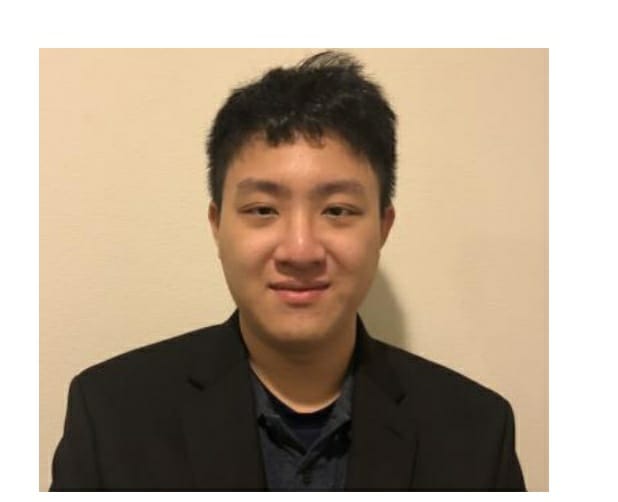
Title: Serial Homicide Offender Risk Assessment Tests
Invited Speaker
Mr. Will Wu
One digital world, United States
Abstract
A serial homicide offender is referred to as the unlawful killing of two or more victims by the same offender(s), regardless of method in separated events. Serial homicide offenders are categorized by their motives, modus operandi, and victims’ testimonies. According to Holmes and DeBurger (1998), there are four types: Visionary Serial Killers, Mission-Oriented Serial Killers, Hedonistic Serial Killers, and Power-Oriented Serial Killers. Based on the homicide offenders, Structured Assessment of Violence Risk in Youth (SAVRY) and Static-99 were created to predict and analyze how people formed themselves into criminals. This research involved a deep study of serial homicide offenders active between 2015 to 2020 and used the assessment to establish their categories. Besides, the research also dived into the risk assessment test to provide feedback and suggestions.
Key Word: serial homicide offender, risk assessment test, typology, SAVRY
Biography
Tsung Hsien Wu is a researcher and a certified victim advocate in the United States who is currently working with refugees from Mexico. Will Wu concentrates his research on serial homicide offenders’ risk assessment tests, victimology, criminal behavior, and criminal profiling. He completed his Masters of Forensic Behavior Science at Alliant International University and now works as a volunteer in One Digital World. His paper “Psychological Analysis of Li Yu’s life, and the motivation for his creations and masterpieces” was announced in Taiwan in 2018.

Title: Written Statements, A Nonverbal Screening Tool for Credibility Assessments
Invited Speaker
Dr. Michelle Doscher
Anderson University, United States
Abstract
Gut feelings are real, as any interviewer or investigator will tell you, but are gut feelings admissible in court? Dr. Doscher introduces her breakthrough research as intended for those seeking substantiated truth. No single deceptive cue is applicable to all personalities and behaviors; however, cognitive intentions are measurable and unique to individuals.Since handwriting is brain writing, cognitive blips from the brain can be immortalized on paper, providing an instantaneous view of a person’s behavioral processes.
Not only are handwritten statements tangible, noninvasive, and economical but also provide virgin thought processes, when collected prior to interviews and interrogations.Dr. Doscher will explain how to capitalize on the cognitive strain a deceptive person invokes upon him/ herself when fabricating a story. Any psychological stress a person experiences will be noted in their handwriting and other nonverbal and verbal behaviors. By using written statements as a screening tool, investigators may confidently link other behavioral cues, as well as verify information related to possible physical evidence.
Biography
Dr. Michelle Doscher has more than 25 years combined experience in various areas of investigative work, encompassing chemical analyses, crime scene investigations, expert testimony, research and development, forensic interviewing, and instruction.She began her career in the mid-90’s with Los Angeles Police Department, Scientific Investigation Division. Her unique background has produced a repertoire of skills, enhancing her credibility as a criminalist and criminologist. Seeking the truth is her passion, hence her incessant desire to bring attention to a newer branch of applied psychology, investigative psychology.

Title: Wrongful Conviction JurorExperience: What Legal Professionals Need to Know
Invited Speaker
Dr. Danielle Schulte Lewis
Dr. Danielle Schulte Lewis Consulting, United States
Abstract
Wrongful conviction is a pressing legal and social justice issue that requires scholarly attention in the United States. Wrongful conviction has been occurring in the United States since the eighteen century. According to the National Registry of Exonerations (2022), 2,949 individuals have been exonerated since 1989. The role of jurors in the criminal justice system has been empirically investigated and debated for many decades as researchers attempt to understand fallibilities in the juror decision-making process. Actual venire person experience with wrongful conviction has not been explored in previous studies, severely limiting evidence-based jury and legal system reform. Training designed to educate and assist criminal justice system professionals in combating wrongful conviction lacks insight obtained only through juror perspective. The goal of this study was to qualitatively explore authentic juror experience with having wrongfully convicted a defendant. The story model of juror decision making and commonsense reasoning were used as conceptual frameworks to explore how juror reliance on narrative construction and commonsense reasoning, rather than legal and judicial instruction, manifested in wrongful conviction cases. RQ1) What is the lived experience of jurors who have rendered verdicts in wrongful conviction cases? RQ2) How does juror reliance on narrative construction of case facts manifest during deliberations? RQ3) How does juror reliance on commonsense reasoning manifest during decision making? In-depth interviews were conducted with 12 jurors who served on a criminal case in which the defendant was wrongfully convicted. Thematic analysis identified several commonalities in the lived experience of jurors who served on a wrongful conviction case. Overall, jurors described the experience as negative, revealed patterns of systemic racism and oppression, expressed skepticism about the CJS, frequently disassociated and deflected the responsibility and implications of the wrongful conviction, and communicated adverse impacts of group decision-making. In addition, analysis detected repeated patterns of juror reliance on narrative construction and commonsense reasoning during the decision-making processes. Jurors exhibited implicit bias colored by life experience, directly impacting their decision-making in wrongful conviction cases. The results of this study warrant a need for immediate action in the form of jury system education and reform. Criminal justice professional awareness of this issue is limited, and attorneys and judges must address potential juror bias head-on to prevent faulty determinations of guilt. Further, criminal and social justice platforms must be made aware of patterns in the deliberation process to implement effective, informed avenues of change.
Biography
Danielle Schulte Lewis, Ph. D., has been making a difference in the United States criminal justice system for over 15 years. She has served as a criminal defense fact and mitigation investigator since 2006. Danielle obtained her Ph. D. in Forensic Psychology from Walden University in 2020 and is an adjunct professor of psychology at the University of Providence. Danielle’s doctoral research on juror bias ignited a passion in her to spread awareness pertaining to flaws in the United States jury system and abundant pro-prosecutorial bias within the criminal justice system via presentations, scholarly publications, and expert consultations to initiate evidence-based reform in the criminal justice and jury system.

Title: Exploring the Infinite PossibilitiesBeyond the Barrel of aFirearm
Invited Speaker
Ms. Alyssa Kista
University of the Witwatersrand, South Africa
Abstract
Firearm violence has been declared one of the greatest contributing factors of unlawful injury. Firearm-related injuries may result in morbidity, mortality or long-term physical, social and mental disabilities.The number of firearm-related deaths varies across regions and countries due to underlying factors of global disparities. The ballistics of firearm injuries are influenced by several laws of physics. There are various components of a firearm which affect terminal ballistics. The rapid advancement of weapon technology produces a variety of injury patterns and morbidity heightening the degree of difficulty when providing treatment at trauma centers. Gunshot wounds display patient-specific complications due to an extensive range of possible projectiles, velocities and vectors. Different trauma patterns can occur depending on the depth of penetration, direction of tract, entrance site and type of trauma.The determination of whether the injury is an entrance or exit wound is much more complex than it appears to be.Intermediate barriers may obscure the distinctive features of wounds. A range of trace evidence can be identified and analysed to supplement the macroscopic findings by providing information on the circumstance of death. The relevant information will assist in clarifying issues regarding gunshot wounds, which could be utilized to influence policy, inform initiatives and develop prevention strategies for firearm-related deaths around the world. There is need for research to look at the causes for firearm violence and the wound patterns of these cases to provide extensive knowledge and understanding of the topic for advancements in the field of forensic sciences.
Biography
Alyssa Kista is currently an honours student from the Department of Forensic Medicine and Pathology, University of the Witwatersrand, South Africa. She has completed her BSc (cum laude) at the University of KwaZulu-Natal, South Africa. She works together with the South African Department of Health and International Committee of the Red Cross to identify unknown decedents. Her research interests are in ballistics and forensic medicine with a focus on variables that alter the appearance of gunshot wounds.
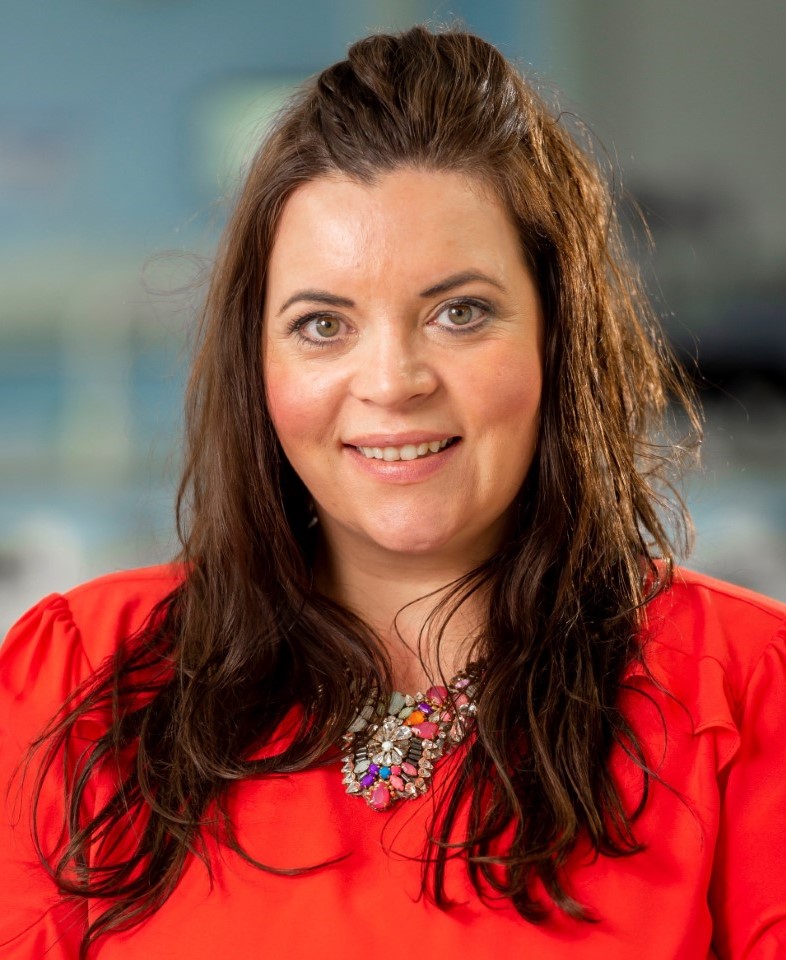
Title: What’s the point? An investigation of clothing severance damage involving conventional and novel knives.
Invited Speaker
Ms. Leisa Nichols- Drew
De Montfort University, United Kingdom
Abstract
Since 2010, there has been a substantial increase in offenses involving sharp or bladed implements reported in the United Kingdom; in the year ending March 2022, the Office of National Statistics recorded 49,027 knife-enabled crimes. According to the 2020 Home Office Homicide Index, kitchen knives contribute to the majority of street based and residential stabbing related incidents.
Here we present a preliminary study involving penetration of a range of upper and lower clothing garments (jumper, t-shirt, skirt, jeans) with novel and conventional knives. Sharp force trauma on the target surfaces was analysed for 300 downward stabbing motions using 5 types of blade.There is a clear correlation between knife tip shape and fabric severance damage. Qualitatively, rounded tipped (less-lethal) knives failed to penetrate clothing, whereas conventional knives with pointed tips produced the greatest damage. Interestingly, a sheepsfoot knife caused trauma similar to that observed from screwdriver penetration. Scanning Electron Microscopy images reveal quantitative insights.
In a subsequent study designed more closely to mimic a stabbing, fabric substrates were placed over tissue stimulants prior to the knife impacts. Further work has compared the observed knife damage with that from other penetrating tools encountered at crime scenes, including scissors, chisels and screwdrivers.
The immediate significance of the outcomes in terms of criminal investigations involving textile damage evidence will be discussed. Future benefits in terms of crime reduction and injury prevention in bladed weapon crimes will be considered, based on smarter design of functional knives with diminished utility as weapons.
Biography
Leisa Nichols-Drew is a Chartered Forensic Practitioner (ChFP), a National Teaching Fellow (2019), and an Associate Professor at De Montfort University in Leicester. Her career in forensic science casework commenced in 2000, at the former Forensic Science Service, and more recently Cellmark Forensic Services. Leisa's expertise is in the forensic science laboratory evidential examination, recovery, and documentation of crime scene exhibits, from a range of offences, within the disciplines of Forensic Biology (blood pattern analysis, bodyfluids examinations, DNA processing and submissions) and Evidence Recovery (including hairs, fibres and trace particulate debris, also shoe/tool/tyre mark analysis, microscopy and UV/IR imaging techniques). Additionally, as a Quality Advisor, Laboratory Auditor (ISO 17025), Technical Trainer, Subject Specialist, and Researcher. Leisa is currently undertaking a part time PhD investigating novel fingermark development methods to aid crime scene and laboratory examinations of leather surfaces. In 2018, Leisa was awarded a Churchill Fellowship to investigate international knife crime approaches for knife crime offences to aid the UK situation. Her proactive and reactive research recommendations resulted in a journal publication which concluded that less-lethal novel knives with rounded tips, do not penetrate clothing fabrics in a stabbing motion therefore reducing the potential occurrence of injuries when compared to conventional pointed kitchen knives. This research was recognised with an award in 2021. Leisa's Churchill Fellowship has led to updates to UK police forces, a submission to the House of Lords forensic science enquiry, was referred to in the National Police Chiefs' Council (NPCC) publicity material coinciding with the legislative changes to the Offensive Weapons Act (2019), and has been disseminated around the world. In 2020, Leisa co-founded an international network called #RemoteForensicCSI with two other National Teaching Fellows: Dr Rachel Bolton-King (Staffordshire University) and Professor Ian Turner (University of Derby) to support academics and practitioners in forensic science training and education, with the transition to online learning, during the Covid-19 pandemic. The #RemoteForensicCSI community has a membership from five continents. In 2021, Leisa was part of the reading group for the QAA Benchmark Standards in Forensic Science. Leisa is an elected member of the Executive Council of the British Academy of Forensic Sciences and sits on the Membership and Ethics Committee of the Chartered Society of Forensic Sciences.

Title: The existence of a sexual victim protection law (UU PKS) in preventing the increase in cases of sexual violence in Indonesia
Invited Speaker
Ms. Reno Fitria Sari
Airlangga University, Indonesia
Abstract
Sexual violence is a criminal act that harms and threatens the victim sexually. In the law, what is meant by sexual violence is every act of humiliating, insulting, attacking, and/or other actions against a person’s body, sexual desire, and/or reproductive function, forcibly against someone’s will, which causes the person to be unable to give consent. In a state of freedom, due to inequality in power relations and/or gender relations, which result in or may result in physical, psychological, sexual misery, economic, social, cultural, and/or political harm. In Indonesia, these crimes are regulated in the Criminal Code (KUHP) and are contained in articles 289 to 296. Article 289 states that perpetrators of sexual violence will get a maximum sentence of nine years. However, cases of sexual violence continue to occur and increase, besides that victims have their own trauma and find it difficult to continue their lives. However, the existence of this law is not enough to reduce the number of cases of sexual violence that occur in society. The Indonesia Ministry of Women’s Empowerment and Child Protection (KemenPPPA) recorded more than 2.000 cases of sexual violence in 2022. I want to see the impact that will arise after the enactment of the Law on the Elimination of Sexual Violence (UU TPKS) which focuses on protection for victims of sexual violence.
Biography
Reno Fitria has completed her Magister program in Forensic Science from the Airlangga University, Surabaya, East Java, Indonesia. She has been working as a forensic analyst to combining psychology and forensic since 2018. Another that, she has been working as a lecturer of psychology forensic in Paramadina University. She has experienced analyst the terrorism, sexual violence, domestic violence, divorce, and child custody cases.

Title: Neurobiology And Genetics Of Human Aggressive Behavior
Keynote Speaker
Dr. Giuseppina Seppini
MSN, RN, Criminologist, Forensic Analyst, Vice-President and Director of Piemonte Regional Office Forum Lex Association, Italy
Abstract
Genetic and environmental influence. What is their influence in the development of violent or aggressive antisocial behavior? In 1961 the condition "XYY" emerged to the attention of scientists, the so-called "theory of the excess of male chromosomes", which occurs when due to "errors" in chromosomal transmission, the "X" chromosome does not couple only one "Y", but two, associating this supernumerary anomaly to aggressive behavior. According to a study conducted by Adrian Raine in 2002, antisocial behavior in 1210 twins may be related to genetic factors. Subsequently Raine and collaborators had also proceeded to measure the level of both proactive and reactive aggression, Brunner in a study published in 1993 in the journal "Science", hypothesized that a mutation of the MAO-A gene, which in normal conditions produces the enzyme mono-amino oxidase A, interfered with the functions of other neuro-transmitters, determining the onset of risky behaviors, attention deficit, hyperactivity, alcoholism, drug abuse, impulsivity and lowering of IQ, often considered a risk factor for the onset of crime and violence. The different levels of monoamine oxidases (MAOs) are due to a genetic polymorphism; low MAOs levels are associated with the development of antisocial and aggressive behaviors, especially in the presence of significant previous abuse, linking the same low MAO-A levels to antisocial personality disorder, even regardless of gender difference. Other studies emphasize the relationship between low MAO-A levels and violent behavior regardless of abuse. There are many contributions made by current medical-scientific techniques, Neuroimaging and molecular genetics, to the understanding of this phenomenon.
Biography
Dr. Giuseppina Seppini. MSN, RN, S. Croce e Carle Hospital Italy, Criminologist, Forensic Analyst, Adjunct Professor of Nursing Research, Master of Science in Nursing, Faculty of Medicine and Surgery, Catholic University, Turin Italy; Member of the British Association of Criminology; Member of the Editorial Board and Reviewer of the Indian Journal of Forensic Medicine and Pathology; Honorary Member of GLAFIMS Global Academy of Forensic and Investigative Medicine and Science-International Chair in Justice; Member of International Association of Forensic Nurses; Member of WAWFE, Worldwide Association of Women Forensic Experts; Vice-Presiden- Director of Piemonte Regional Office Forum Lex Association; Member Italian Academy of Forensic Science. Dr. Iolanda Ippolito Criminologist - Official at the Italian Ministry of Infrastructure and Transport. Honorary President Association "Forum Lex ", (Italy) ▪ Headmaster, professor in Investigative Criminology and Course of specialisation "Expertise in Investigative Techniques and Intervention Procedures in Domestic Violence, Stalking, Feminicide, Bullying, Baby Gang. Until the 23rd of May 2021, Judicial Police Unit for Gender, Juvenile Violence Municipal Police Department in Naples, Responsible person of Unit for activities of prevention, control and contrast, assistance to women exposed to the risk of violence, stalking, violence against children. Referent of the Ministry of Infrastructure, Transport for project “VI International Festival of Road Safety and Legality Arts" as expertise for “Gender violence,bullying, cyberbullying and web dangers”.
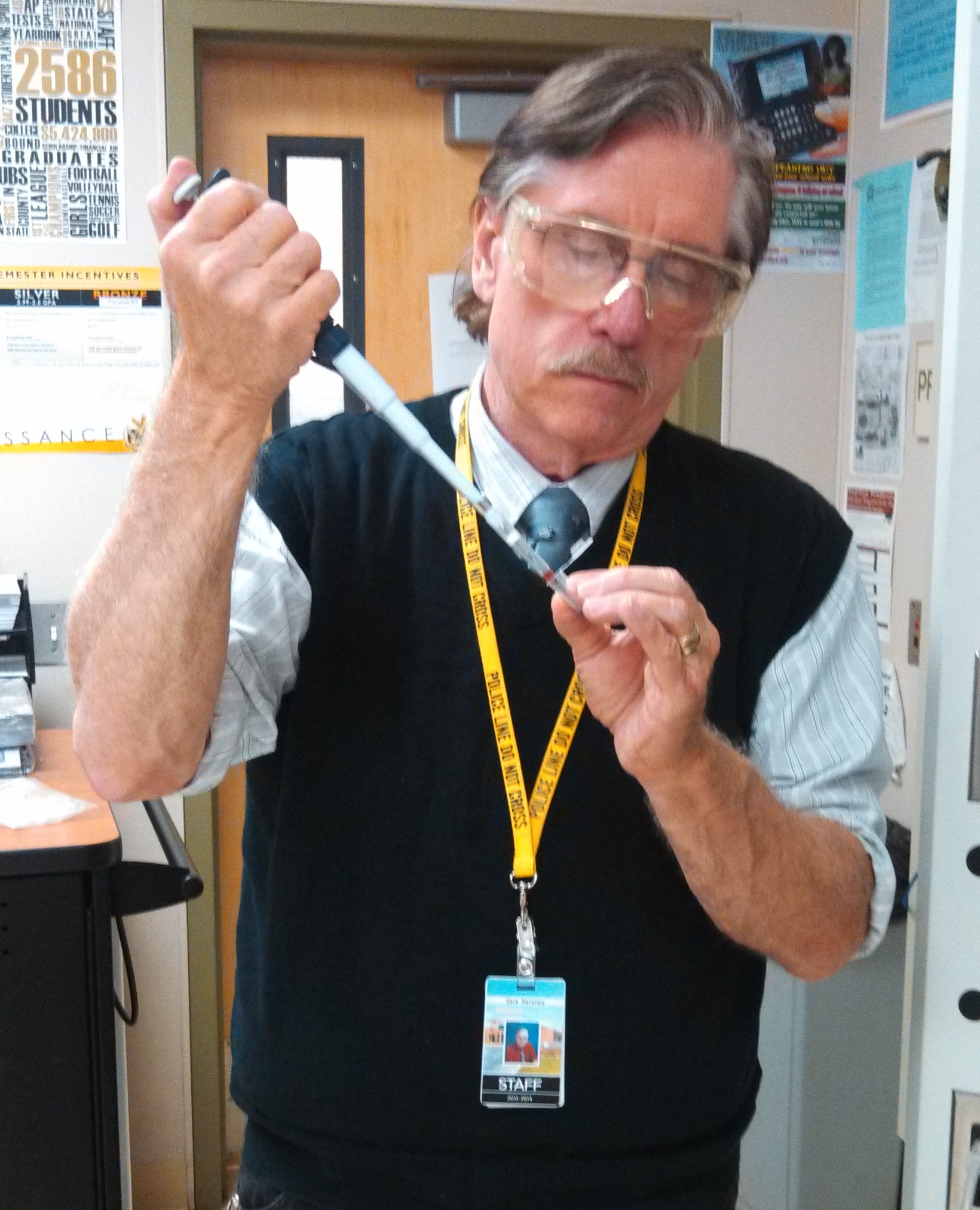
Title: Supporting the engagement of today’s high school learners with your forensic expertise – an educator’s perspective
Keynote Speaker
Dr. Dave Menshew
James C. Enochs High School, United States
Abstract
Today’s science learners at the high school level have arguably faced the most challenging environments in recent memory. The impact of the global pandemic, distance learning, often changing social distancing and masking requirements, coupled with school closures, reopenings, the loss of friends, family, trusted educators and homelife stability have all served to lessen the efficacy of the high school teacher and have resulted in compensatory approaches across the curriculum. Novel approaches coupled with increased support for stakeholders seeking to improve access to core science concepts and help grow the next generation of STEM professionals can be enhanced by application of the skill set already in place with today’s forensic specialists. This presentation seeks to outline, define, model, exemplify and detail how students in one of the nation’s most challenging regions have benefitted from long term support by members of the practicing forensic science community. In collaboration with teachers, crime scene analysists, researchers, and others in the investigative community can help reinvigorate today’s students’ interest in learning science.
Biography
Dave Menshew completed his Ed.D. in educational leadership from Brandman University and anM.A. in curriculum and instruction from Chapman University. He achieved National Board for Professional Teaching Standards certification and has been an educator for 30 years, 8 of which as an adjunct professor. He was selected for the Amgen Award for Teaching Excellence, and the Biotechnology Industry Organization’s Teacher of the Year award. His work to promote the inclusion of diverse populations in STEM education was recognized by the Association of Mexican American Educators Award as well as an Omega Psi Phi Citizen of the Year. His publications focus on promoting STEM education.
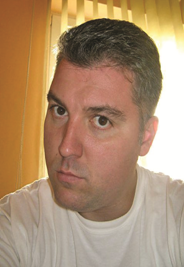
Title: Judicial arguments in medicine, for changing the legal classification from suicide to suspicious death, in the case of the Romanian light music star, MadalinaManole
Poster Presentation
Dr. ADRIAN MARIUS CHIPURICI
AGORA UNIVERSITY, Romania
Abstract
Madalina was found dead in the morning of 14.07.2010, in the hallway of her house in a pool of blood. The ambulance crews found mydriasis, cadaveric stiffness in the limbs, a traumatic injury with continuity solution in the top of the head and the existence of a viscous cyclamen-colored substance in the upper respiratory tract, from which the possibility of voluntary intoxication was deduced. Following the autopsy, the following were found:
-left parieto-occipital traumatic injury, relatively vertical, which in the opinion of the coroner has no thanatoinitial connection and which would have required 8-9 days of medical care;
- skull bones intact;
-250-300 ml carbofuran in the stomach;
- microscopic lesions of the esophagus;
- carbofuran and its metabolite in the sampled parts, without urine (GC-MS and HPLC);
-phenobarbital 5.7 micrograms/liter (blood - HPLC method);
The conclusion is, cardio-respiratory failure following acute intoxication with Carbofuran (Furadan).
Considerations:
Considering the shape, location and consequences of the head injury, in the context of the hallway where Madalina was found, it suggests a heteroaggression, through a mechanism of production, by hitting with elongated hard bodies. To review the pictures with the correspondent, epicranial and cranial of the lesion described by the coroner. In the on-site investigation, no surface (hard body) responsible for the cranial injury was identified.
The amount of Carbofuran found in the stomach, 300 ml, denotes a hyperacute intoxication, with mydriasis initially and then miosis. The lethal dose (DL) in rats is between 5-13 mg/Kg. Extrapolating to humans, the average lethal dose is between 250-650 mg for a 50 kg person.
Considering the organoleptic properties of Carbofuran (Pesticide from the group of carbamates), liquid, viscous, repulsive taste and smell, it is difficult to drink, especially in such a quantity (300 ml) without causing nausea and vomiting through a reflex mechanism, and phenobarbital, found in a concentration of 5.7 micrograms/liter, is insufficient to abolish the vomiting reflex. (The therapeutic dose is between 10-40 micrograms/liter). An explanation would be the state of unconsciousness when ingesting the toxic substance. This hypothesis is strengthened by the lesions on the esophagus, the amount ingested and the presence of the toxicant in the lungs.
Although the toxicological analysis methods used (GC-MS, HPLC) are fine and quantitative, the concentrations found in the samples taken are not expressed. Urine was not sampled, so it is not possible to estimate the degree of metabolism of carbofuran in vivo. This is important, because it gives clues about the amount metabolized and implicitly the time of death.
The presence of carbofuran in the brain, in an untransformed form (passed through the liver and metabolized) denotes a communication path between the pierced blade of the ethmoid and the brain or a skull fracture, with a correspondent in the route of ingestion of the toxicant. These suggest a heteroaggression.
Biography
Marius Chipurici, is a judicial expert in pharmacology and medicine, licensed in physics, chemistry and medicine. He has a master's degree in biophysics and in criminal sciences and forensics, a doctor of medicine and a primary care physician. He has been teaching for over 20 years at the Faculty of Medicine and Pharmacy, pharmacology and for over 10 years, legal medicine at the Faculty of Law. Since 2014, he is the head of the Department of Clinical Pharmacology and Toxicology at the Clinical Hospital C.F. Oradea city. He has postgraduate courses in toxicological expertise, GC and hospital management and is a member of TIAFT.
+91 9491 456 452
Door No.200, Immidhihalli Main Road, Whitefield-560066, Bangalore, India
About Us
Global Scientific Guild organizes conferences and webinars to promote quality research and real world impact in an atmosphere of true international co-operation between scientists, doctors, professors, practitioners, engineers and industry by bringing together the world class renowned personalities to discuss the latest developments and innovations at one common platform.